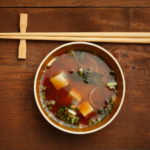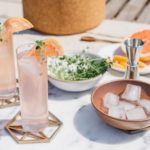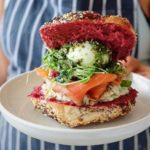The Okinawa diet: eating for longevity

The (not so) secret to longevity might be hiding in your fridge. Whether you are after the oldest human on Earth world record or just want to have the best quality of life for all of your 87 years on this planet, a lifestyle adjustment could change your life by extending it. Sure, many factors have to be taken into account when it comes to not dying, but given that karma is on your side and that you wear your bike helmet, the Okinawa diet might do the rest by sparing you the heart attacks, high blood pressure, strokes, diabetes, cholesterol and so on. Interested? Read on.
What Is Okinawa
Okinawa is not something as much as it is somewhere. The name designates a small Pacific Ocean island south of Japan. What’s special about it? Its residents have been known for having the highest life expectancy in the world. Up until recently, 81.2 years old was the average lifespan of Okinawans. Of course, the region has since sadly been Americanized, but not before their centenarians and their beneficial habits could have been studied.
What does the Okinawa diet consist of?
The Okinawan lifestyle circa 1950 resembles in many ways the Japanese one but also differs in multiple aspects. While the Okinawa diet is highly and mainly plant-based, it also includes small portions of fish (less than half a portion a day) as well as pork and eggs on a non-regular basis. Unlike a traditional Asian diet, it is also low in sodium. Their main staple? Not rice, but rather purple yam, and lots of it. They also used to eat a good number of beans and tofu, as well as green and yellow vegetables including various types of seaweed. Another very important aspect: the diet is frugal, in fact as stated in the Japan Times, they only eat until they are about 80% full. Therefore, small portions are consumed and the number of calories is considerably lower than what most people eat on average. Anything else? Yes. Lots of herbs and herbal brews.
The Okinawa Diet’s List of Foods
Here is a non-extensive list of some of the main food items consumed on the Okinawa diet. Please note that some are eaten in extremely small quantities as well as on a very rare basis.
Vegetables
- Purple sweet potatoes
- Goya
- Seaweed
- Taro root
- Luffa
- Okra
- Okinawan carrots
- Garlic
- Tomato
- Handama
- Shima rakkyo
- Onions
- Leafy greens
Legumes
- Tofu (lots!)
- Miso
- Soy sauce (very little)
- Grains
- Brown and white rice
- Buckwheat noodles
- Rice noodles
Fruits
- Bogor pineapple
- Flat lemon
- Mango
- Papaya
- Passion fruit
- Guava
- Acerola cherry
Meats
- Pork (including the organs)
- Fish
The Okinawa diet might be the ultimate proof that less is more, at least when it comes to health. Eat less food, more plant-based and in a simpler form is what you want to take away from this population. And if you are not one to take any chances when it comes to putting everything in your favour in order to live as long as possible, consider adopting a full Okinawa diet.
Cover credit: fenris.wolf | Bigstock
You may also like






